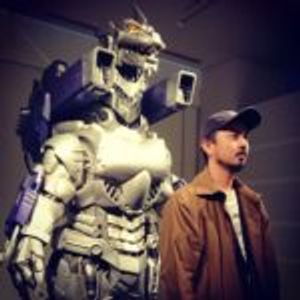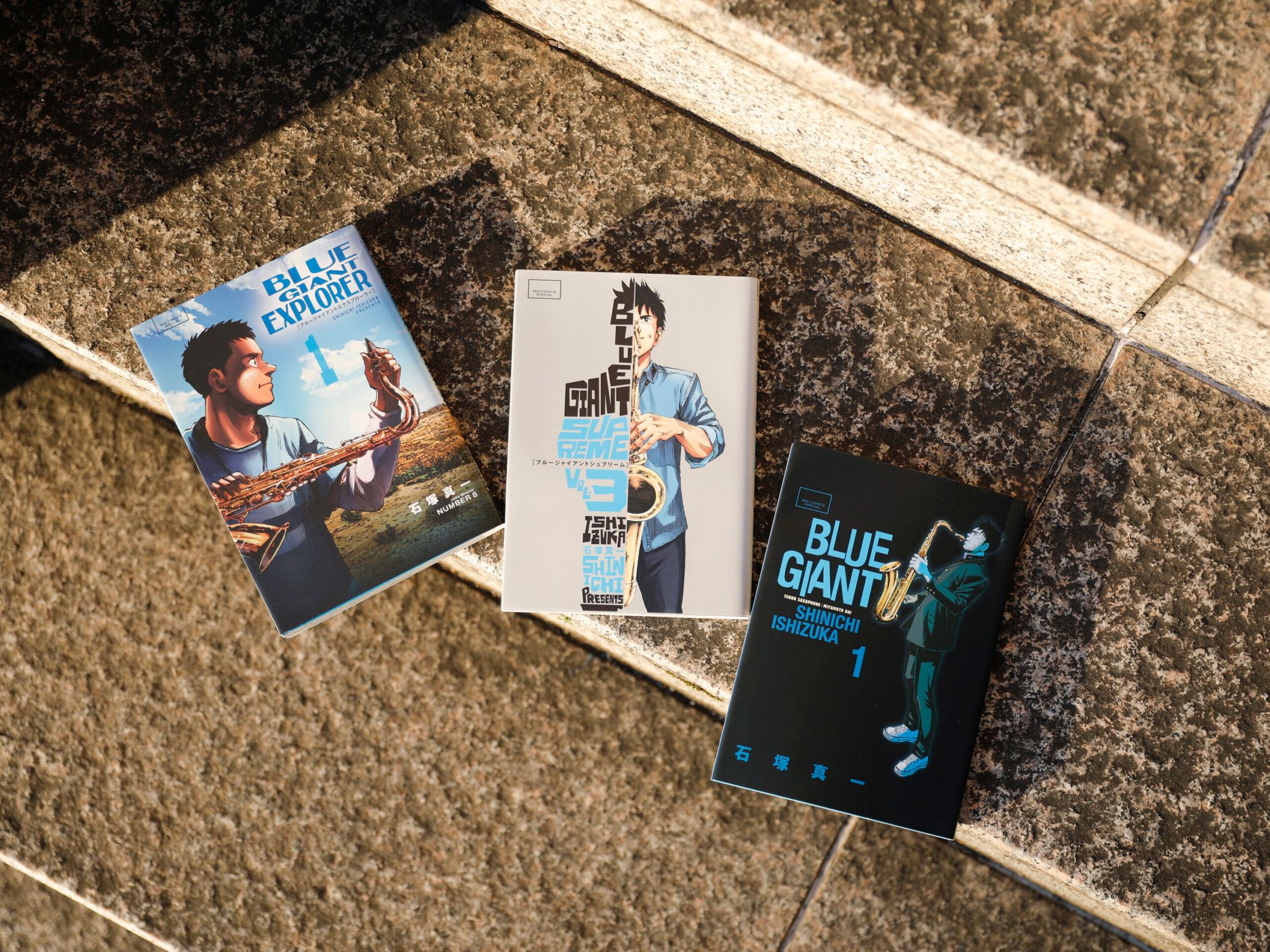
Through the medium of manga, BLUE GIANT portrays the power of music in the name of jazz, and a person growing up. The first chapter of BLUE GIANT takes place in Sendai and Tokyo, the second, BLUE GIANT SUPREME, in Europe, and the third, BLUE GIANT EXPLORER, in the United States—The series is ongoing, traveling to different locations. It is also a successful manga that has sold over 6.8 million copies. So, why did the author, Shinichi Ishizuka, decide to write a manga about jazz in the first place, and how does he draw the sounds that are consequently muted in manga? I spoke with the man, who grasped his dream to become a self-taught mangaka, to learn about his thoughts on creativity and his sentiments embodied in his work.
Actually, jazz came in my mind before the mountains. I had always been thinking that someday, I will write about Jazz!
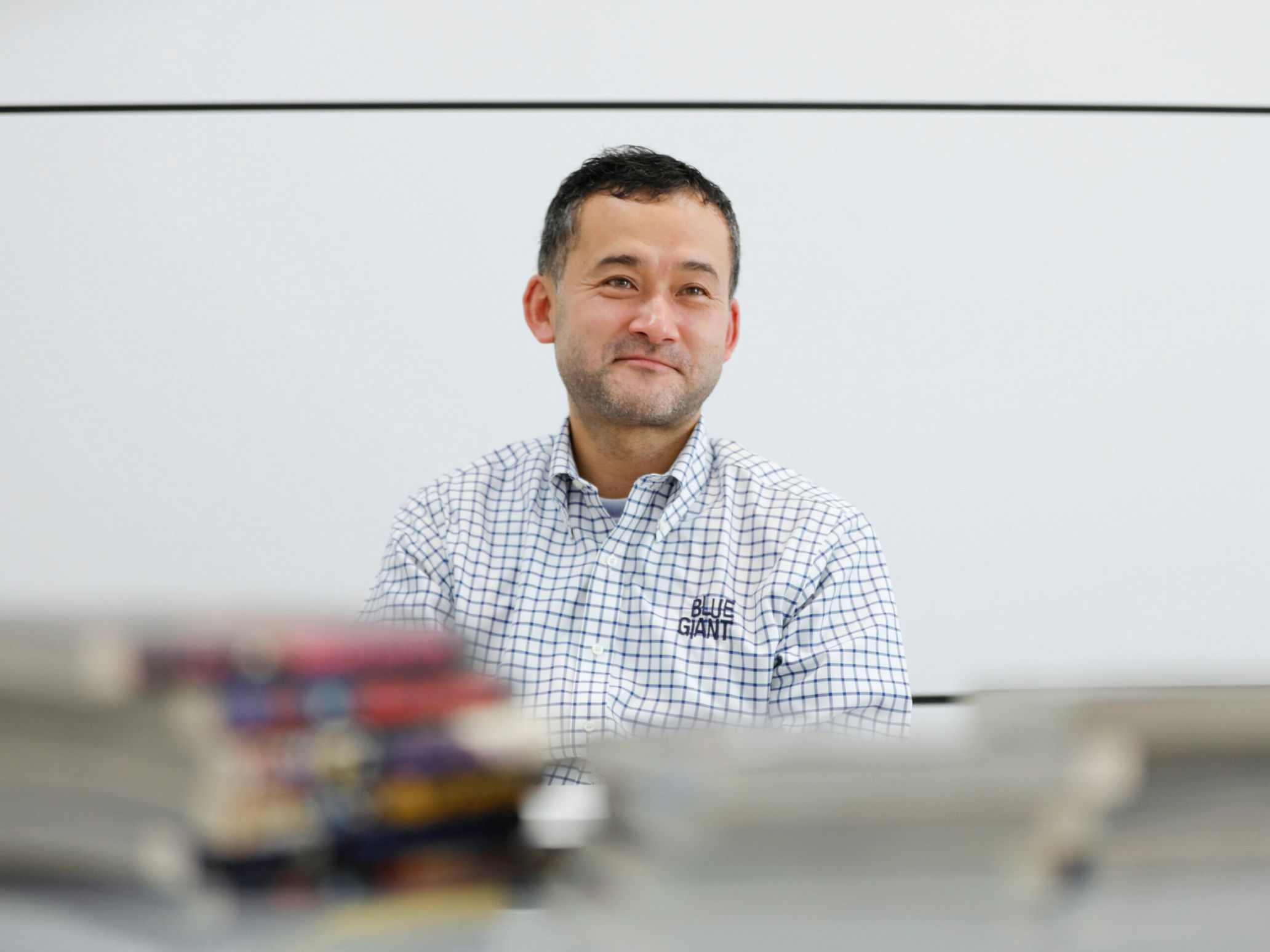
――To begin with, what made you want to become a mangaka?
Shinichi Ishizuka (Hereinafter Ishizuka): I studied in the states when I was a college student. While I was there, my friend flew from Japan to study archeology—When I asked my friend why he had to come all the way to the states for that, he answered that it’s because he was influenced by Naoki Urasawa’s manga, MASTER KEATON. I hadn’t known anyone like him, who was greatly inspired by something, and the fact that a manga has changed someone’s life impacted me strongly. Since then, I had been thinking that one day, if I find something that sparks me to share with others, I want to present it in the form of manga—This is when I was in my early 20s.
――Generally speaking, I think the most common way to become a mangaka is to write your own manga and enroll for a contest, or become an assistant of a professional mangaka to acquire skills. However, you’ve became a mangaka without going through these paths.
Ishizuka:When I found out that Shogakukan Shinjin Comic Award is the gateway for people who want to be a mangaka, I thought, “There’s no other way!” and submitted my work. But back then, I had never drawn pictures and didn’t know how to draw a manga at all. So, I studied Mr.Kenshi Hirokane and Mr.Naoki Urasawa’s works—I started drawing by emulating their works when I was 29 years old.
――Your debut work, This First Step won the 49th Shogakukan Shinjin Comic Award for General Manga, and officially debuted in 2002. The two eminent mangakas you just mentioned are generally known for depicting complex human dramas—were you influenced by that as well?
Ishizuka: Originally, I had read more novels than manga, so I’ve always wanted to convey human dramas of people living in the modern era. To this day, I’m still inspired by Mr.Hirokane and his deft technique of “legibility.” Since his illustrations are extremely convincing and he’s a dexterous storyteller, I don’t need to read back-and-forth to understand the story. It’s also my goal for the readers to read my manga without any stress.
――Tell me your particularity in creating works.
Ishizuka: I’m more fascinated with “relationships among people” than incidents. My challenge is to figure out a way to approach the themes that have been widely used in other works. Usually there are no antagonists in the stories I write. [laughs awkwardly] I want to continuously confront the challenges of creating stories of normal people so-called “Normies.”
――I was especially surprised when I found out that—followed by your previous mountain-rescue manga, Gaku—you were writing a music manga.
Ishizuka: Actually, the idea of jazz came before the mountains. Essentially, when I decided to pursue my career as a mangaka, I had a strong will to convey music, especially jazz; and if I’m making my favorite jazz a theme, I wanted to deliver its images properly, and make it better than any others. However, I didn’t have enough skills at that time that it was difficult for me to portray jazz. But instead, I thought that I could write a story about mountain-rescue, as it entails actions, consisted of clear movements, and the concept of life and death. And I had been thinking that someday, if I gained confidence as a mangaka after I finish writing Gaku, I will write a story about jazz.
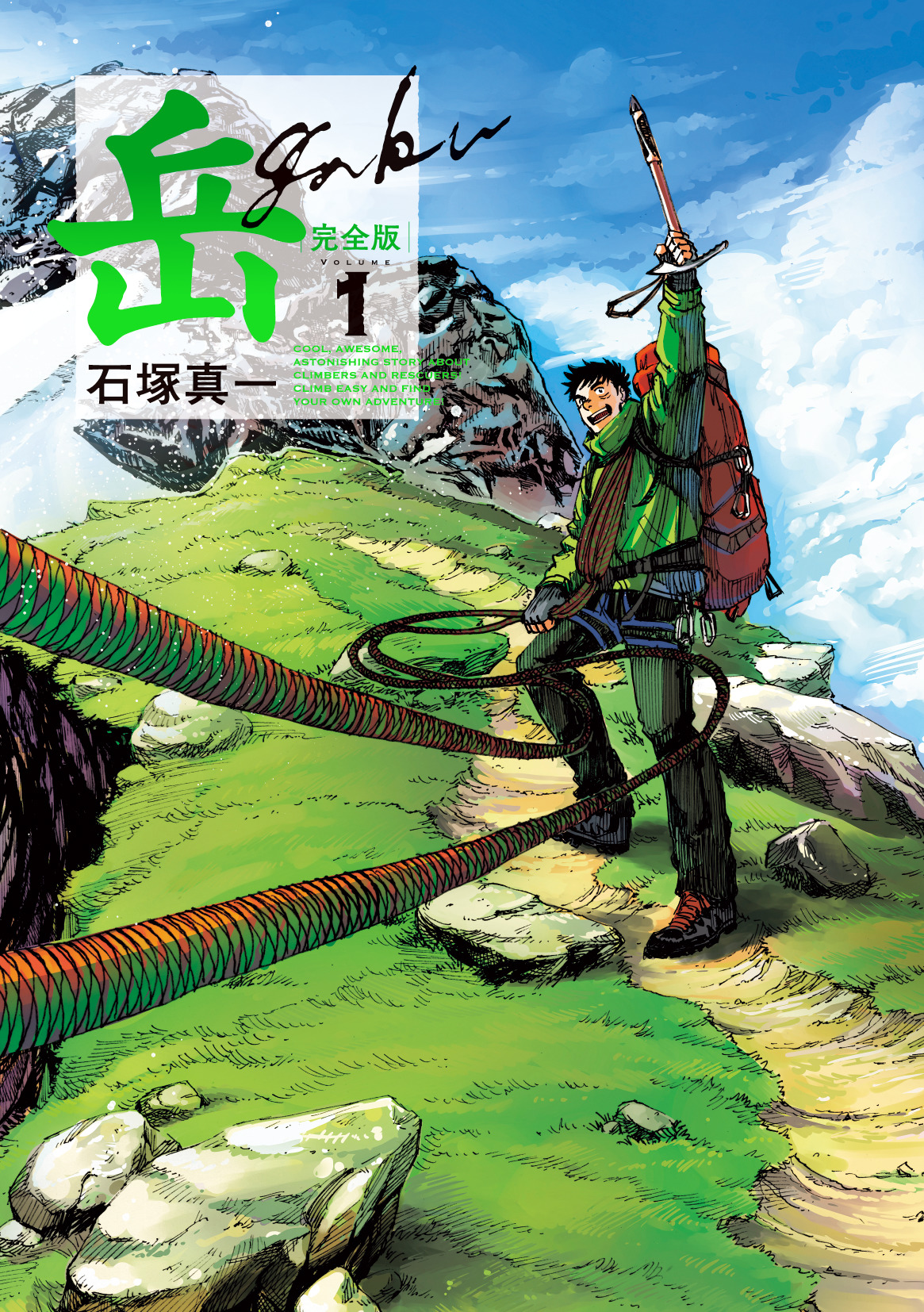
Gaku ©︎ Shinichi Ishizuka/Shogakukan
――How were the reactions of people around you?
Ishizuka: Everyone told me in the beginning, “You shouldn’t write about jazz.” But, when I started writing Gaku, people also said, “You’re writing about the mountains now? Who would want to read that?”—So, I was actually relieved with the responses. It was a familiar situation. In retrospect, when I had decided to quit my job to become a mangaka, my boss at that time vehemently opposed and said to me, “It’s hopeless.” Yet, because of his words, I was able to acknowledge my genuine desire and firmly decide to become a mangaka—so now, I feel grateful to him.
Quiet and active live scenes. I want to incorporate more “Wabi-sabi”-like expressions.

――So, the opposing voices persuaded you to take a step forward. After your illustrious debut, BLUE GIANT has made a successful start—but isn’t jazz exceptionally hard to portray, especially because it usually doesn’t have any lyrics?
Ishizuka: That’s true. Especially the main character, Dai, plays the sax, and when he’s performing, the gestures are limited as he can’t let go of either hand. Though, if you look at old record covers, they’re simply a picture of the instrument and a human together—but they look really cool. These record covers gave me hope and made me think that I can do it……yet, when I actually started drawing, it was unbelievably difficult. [laughs awkwardly] On top of that, as the story develops, the details in illustrations also become more intricate.
――I feel you. Manga can’t be conveyed in a single picture, and it needs to be through multiple frames. By the way, when I’m reading, I feel like the sounds are really coming out of the pages, maybe because of the sound words (sound effects drawn in the scenes) and the focus lines, or the exquisite angles. Tell me about these expressive details.
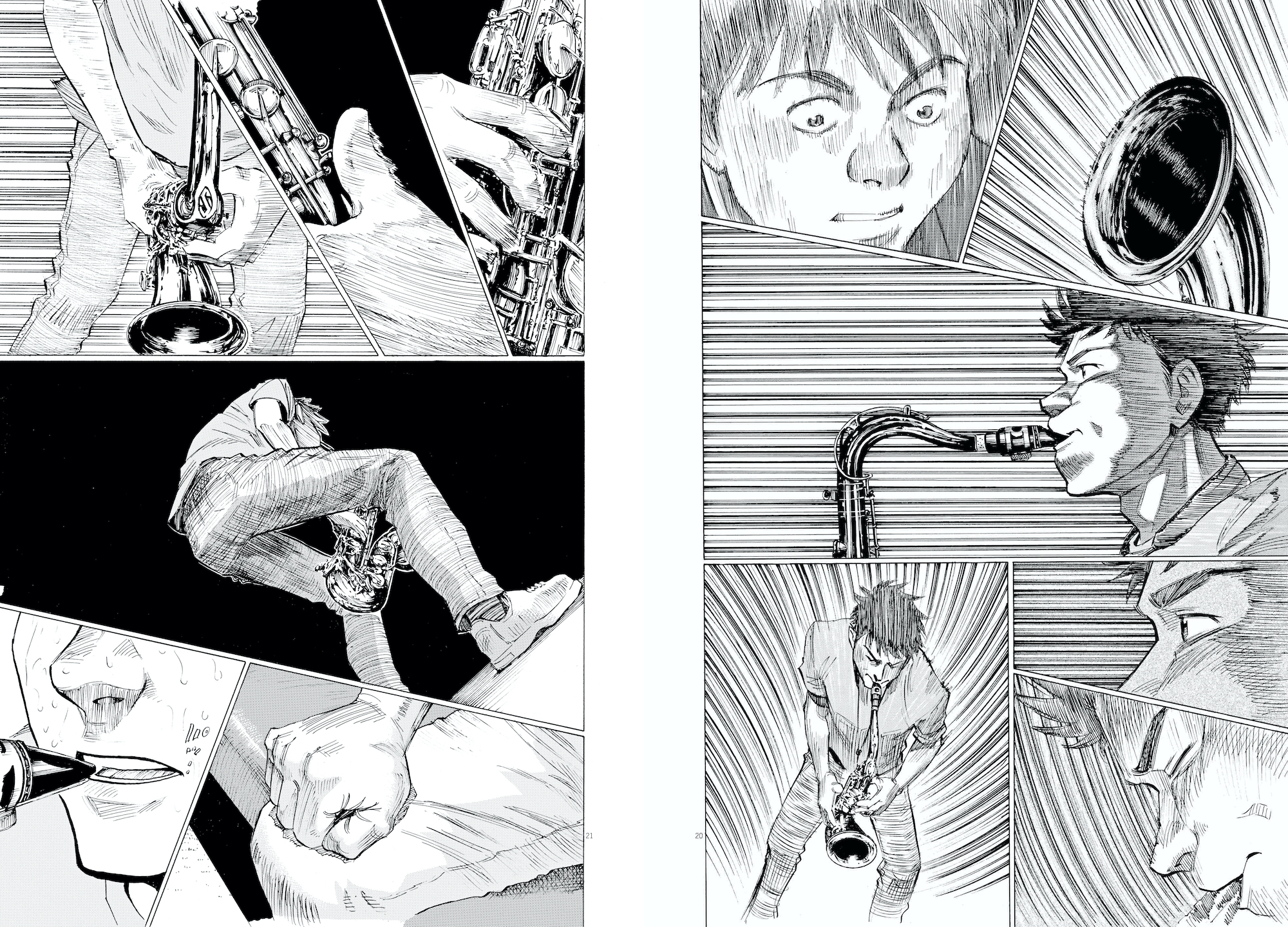

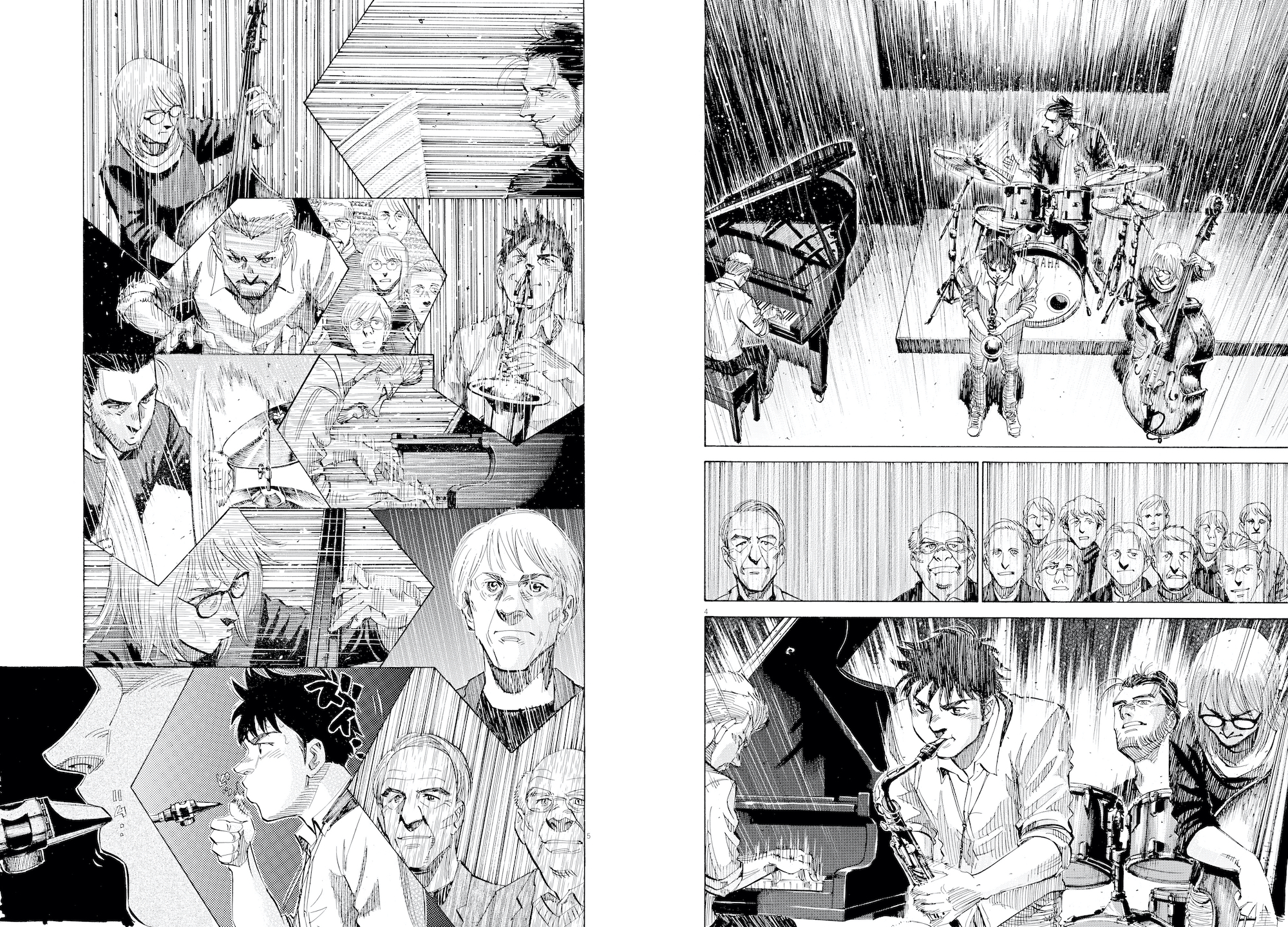
BLUE GIANT and BLUE GIANT SUPREME ©︎ Shinichi Ishizuka/Shogakukan
Ishizuka: Well, there’s nothing much I can do in the beginning, other than adjusting the angles (the angle of view) and light-dark tone……and posing. When the characters are performing, their gestures are limited, but the scenes still need to look cool. I try to study motions, as much as possible, through videos, including films, and works of other mangakas. Manga like Mr.Shuichi Shigeno’s Baribari Legend is a great reference. Obviously, the motorcycles aren’t moving in flat drawings, yet in the story, it looks as if they are really moving. I could also perceive the powerful sounds from the pages—and especially with the sound words of putting in the gear and the tires gripping—the entire roadway noise is impressively realistic and cleverly rendered. Me, on the other hand, I tend to use a lot of Ba-Ba-Ba-Ba-Ba, so I need to elaborate on that more. [laughs]
――I would’ve never guessed that you were referencing from a motorbike manga.
Ishizuka: I think the challenges of drawing the movements of motorbikes in a flat picture is similar to portraying the sounds of instruments as if they can really be heard. In that sense, it’s the same with sports manga. It’s imperative for me to read those types of manga.
――How about the phenomenal live scenes, that are also the highlights of BLUE GIANT?
Ishizuka: I often get inspirations from real-life performances, and no doubt, the performance scenes are the most straightforward and fundamental scenes in the story. Also, we get to see performances that exceed our imaginations. One hand would be hitting the notes and the other hand would be strongly tapping the rhythm—like that, we need to create pictures that would make us utter, “How cool!”
――The scene of Yukinori’s solo piano performance in the 10th volume of BLUE GIANT, gave me chills—Yukinori appears in the dark in a poised manner, but passionately playing the piano. The entire picture is incredibly quiet without a word, yet that conjures up the sounds. I thought that expressive style is very Japanese.
Ishizuka: Do you mean like it’s a “Wabi-sabi”-like style? I’m happy to hear that. I want to create more moments like this, that are not merely intense.
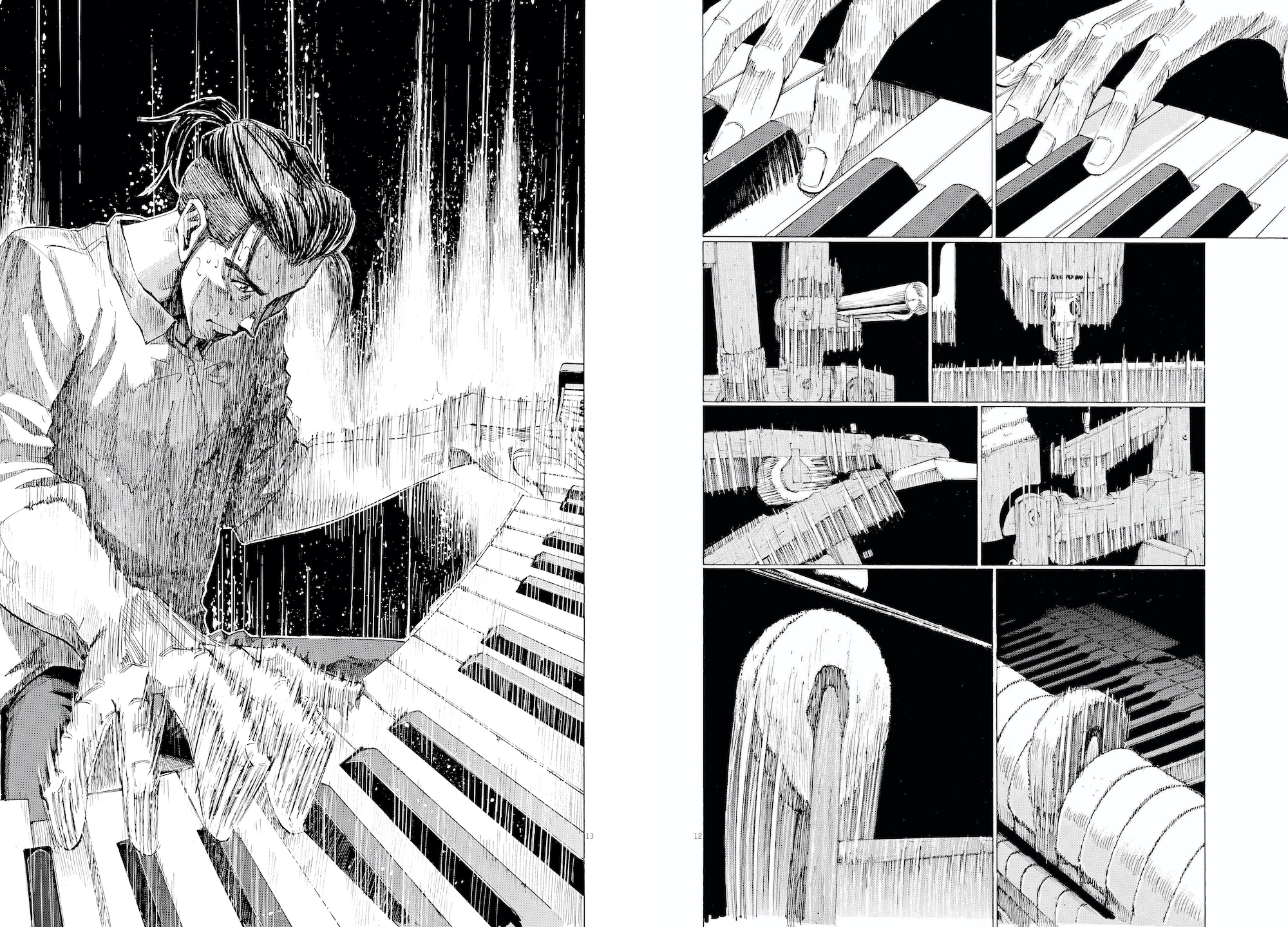
BLUE GIANT ©︎ Shinichi Ishizuka/Shogakukan
――Also, there are a lot of practicing scenes in BLUE GIANT.
Ishizuka: I think the act of mastering to play the instrument is a lonesome exercise. In the past, I heard from a jazz insider that musicians spend an enormous amount of time for practice. And only the ones who sustain their efforts, make it through. That’s why Dai is constantly practicing. I personally don’t like practicing, so he impresses me like, “Dai, what a hard worker.” [laughs]
――It often shows the performers making eye contacts with one another during the performances.
Ishizuka: I think eye contacts are extremely important. I think there will be more scenes in the future, where the performers communicate without a word during their performances.
――There are a lot of scenes like that especially in BLUE GIANT SUPREME, which takes place in Europe. You can see Dai struggling with the language barrier in the beginning, when he gets in Europe from Japan. However, he forms a band with the three musicians, who are from different countries and have different values, and they gradually begin to understand one another and communicate through sounds.
Ishizuka: The theme of the series in Europe was, “How to understand one another,” but it was really hard to portray. Ultimately, the characters can’t verbally understand one another 100% what they are thinking and trying to say, so you see miscommunications occurring with their expressions and reactions. Despite the circumstance, music can bring the characters together, and allow them to move forward—that’s what I wanted to convey.
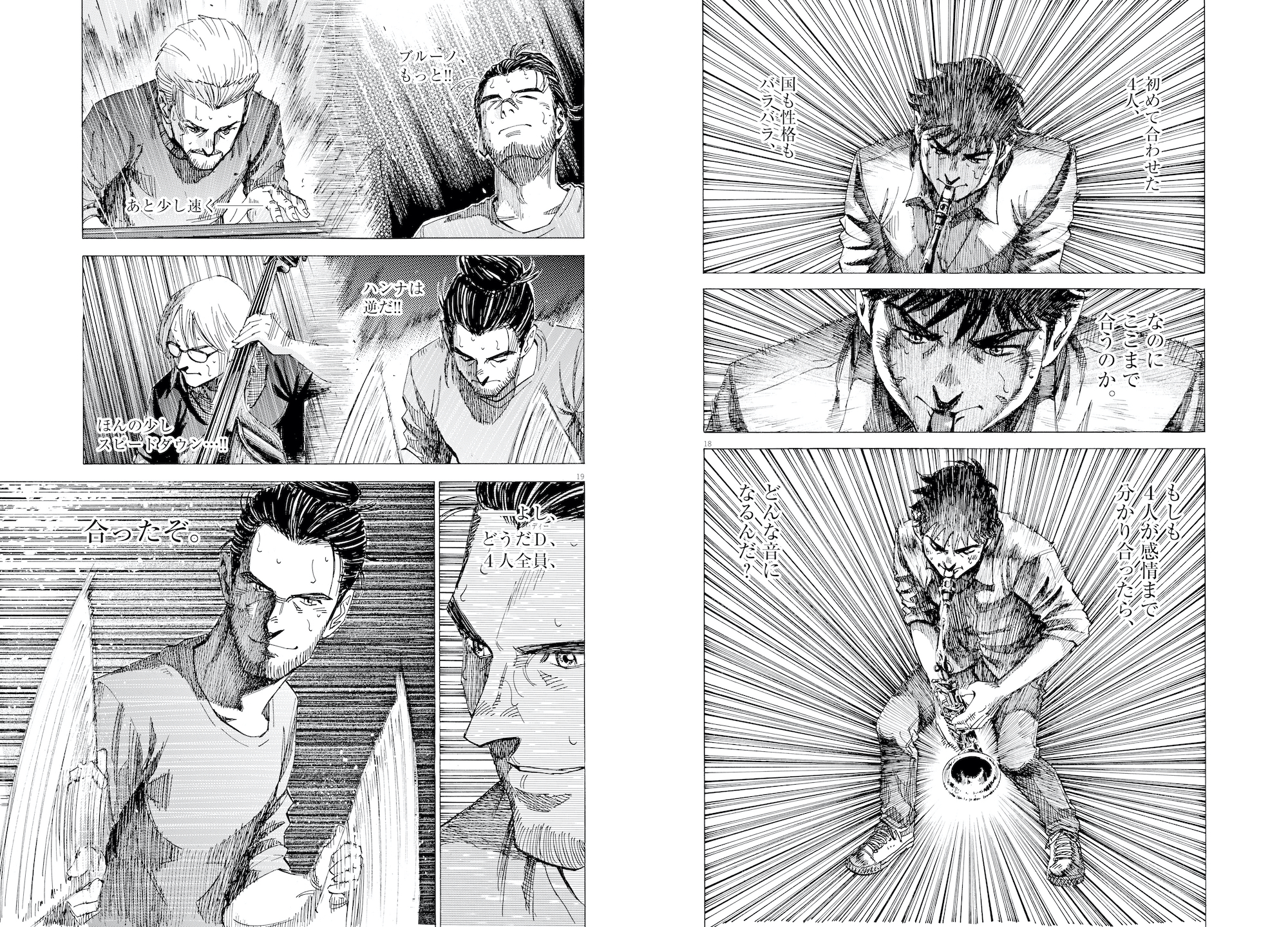
BLUE GIANT SUPREME ©︎ Shinichi Ishizuka/Shogakukan
If people point out to you and say, “It’s wrong,” that’s a sign of you challenging

――Reading through the entire story, I thought the foreshadowing was done very naturally. For example, I’m assuming, the moment of the cab driver in BLUE GIANT SUPREME is linked to the new years cat episode in BLUE GIANT.
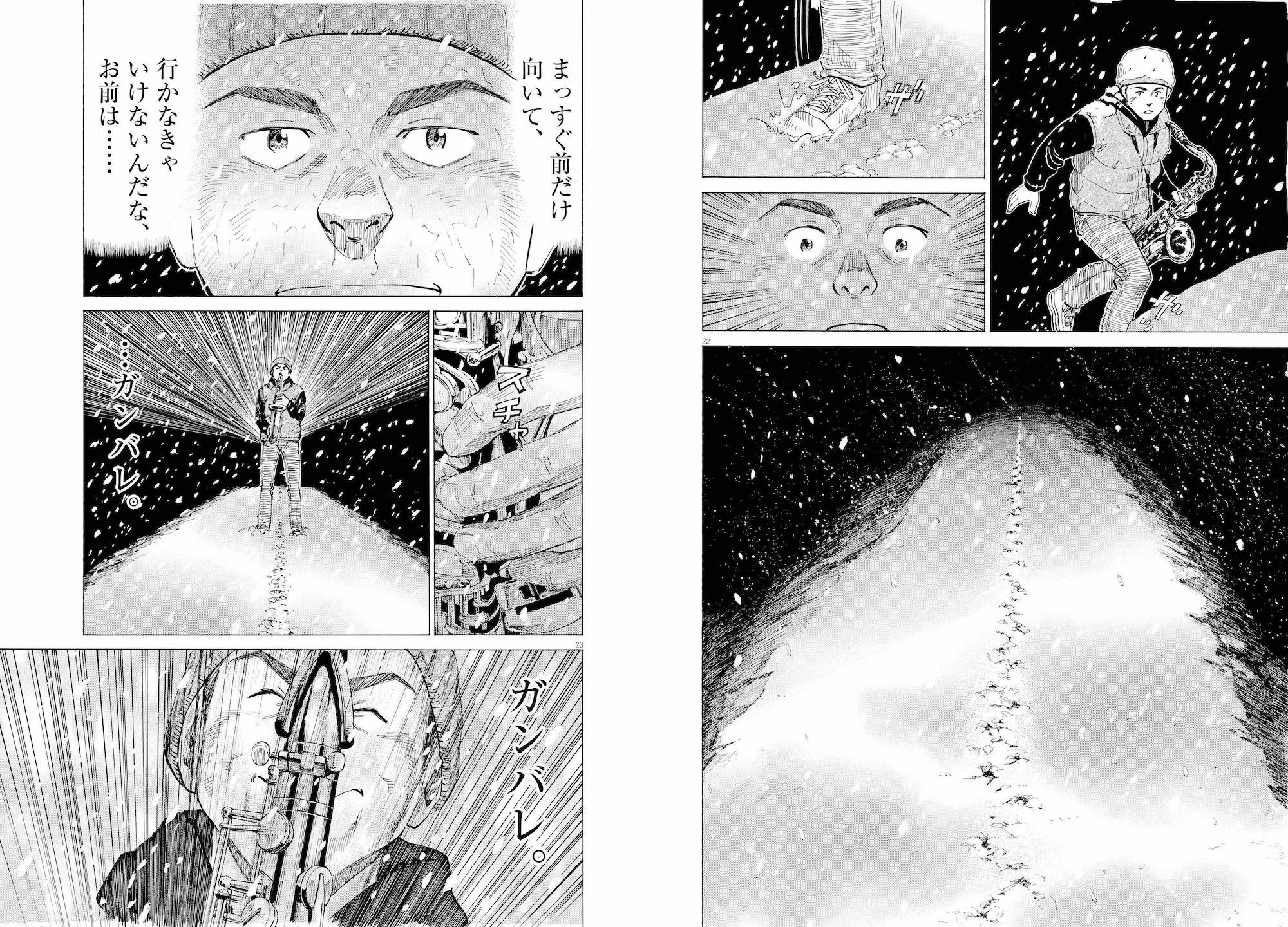
BLUE GIANT ©︎ Shinichi Ishizuka/Shogakukan
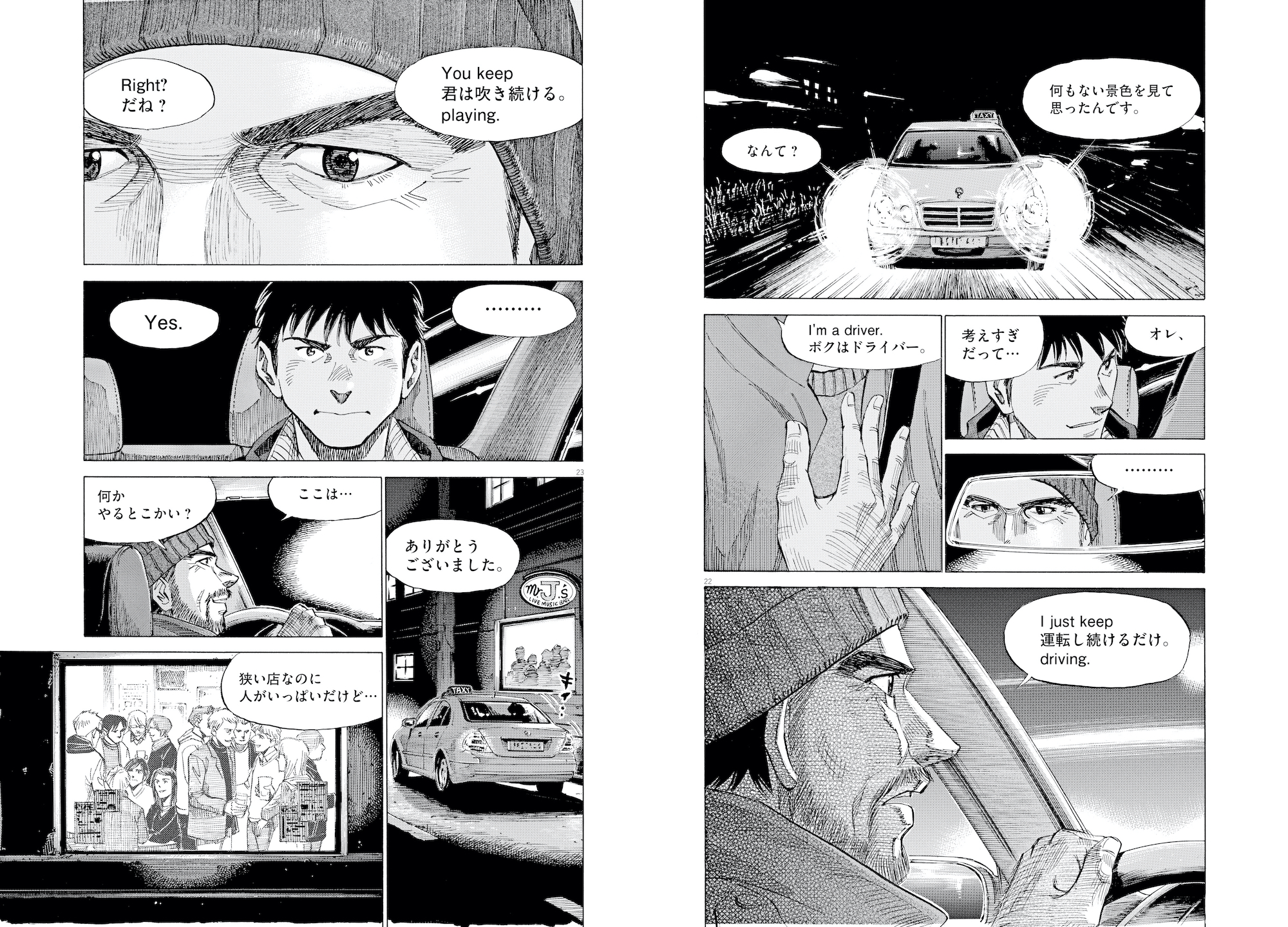
BLUE GIANT SUPREME ©︎ Shinichi Ishizuka/Shogakukan
Ishizuka: Oh!! I see……I just realized so. [laughs] I do understand what you mean about those scenes. I often write with the flow, so there’s always a discovery from people’s observations. [laughs]
――[laughs] How was the main character, Dai Miyamoto, born?
Ishizuka: Since the beginning, I’m working with the same editor, who is also the story director under the name, NUMBER 8; before publishing the series, I had discussed with him about the protagonist, and that was when we came up with Dai—the character, who is like me but different. He’s got something I don’t have. He might be the reflection of what I yearn to be.
――Dai, he’s such a conundrum. Like, he can’t be described with one word.
Ishizuka: I even haven’t got a grasp of him yet. He’s really kind and compassionate towards his family, friends, and even strangers, however, in order to level up with jazz, he could make callous decisions.
――In the story, he’s told from his peers that he’s self-centered.
Ishizuka: He makes me think, “What a strange dude,” all the time when I’m writing the story. But, if I take the uncanny part away from him, he’ll just become a plain good dude. Once the panel sketch (the layout) is done, I show it to NUMBER 8 for him to check, but sometimes he rejects, “This is tedious, you (Ishizuka) are not getting into Dai!” which is usually when Dai is saying mundane things. It’s never good when I compromise like, “Oh well, that’ll do.” At all times, I need to convey Dai as a real human being.
――The psychological portraits of the characters aren’t stereotypical, and they are very realistic.
Ishizuka: You can’t predict the emotional shifts of the characters. I don’t think there should be constraints like, “This character would never do or say such thing.” People can do anything and sudden changes in their feelings are normal, and that’s what makes them interesting. Therefore, regarding the dialogues and development of the story, they are decided based on the ideas we come up with. At times, my idea gets accepted, at times NUMBER 8’s idea gets accepted—In fact, it’s like playing rock-paper-scissors.
――I see. There are moments that amazed me like, “I wouldn’t have imagined this line here!” For example, the one in the scene after the first live performance.
Ishizuka: You’re talking about the scene where Dai wanders to the park at night and sits on the bench without saying anything, after he messes up at his first live show. When I was thinking how Dai would be feeling in this situation, NUMBER 8 mentioned that he would simply sigh, “That’s nothing.”
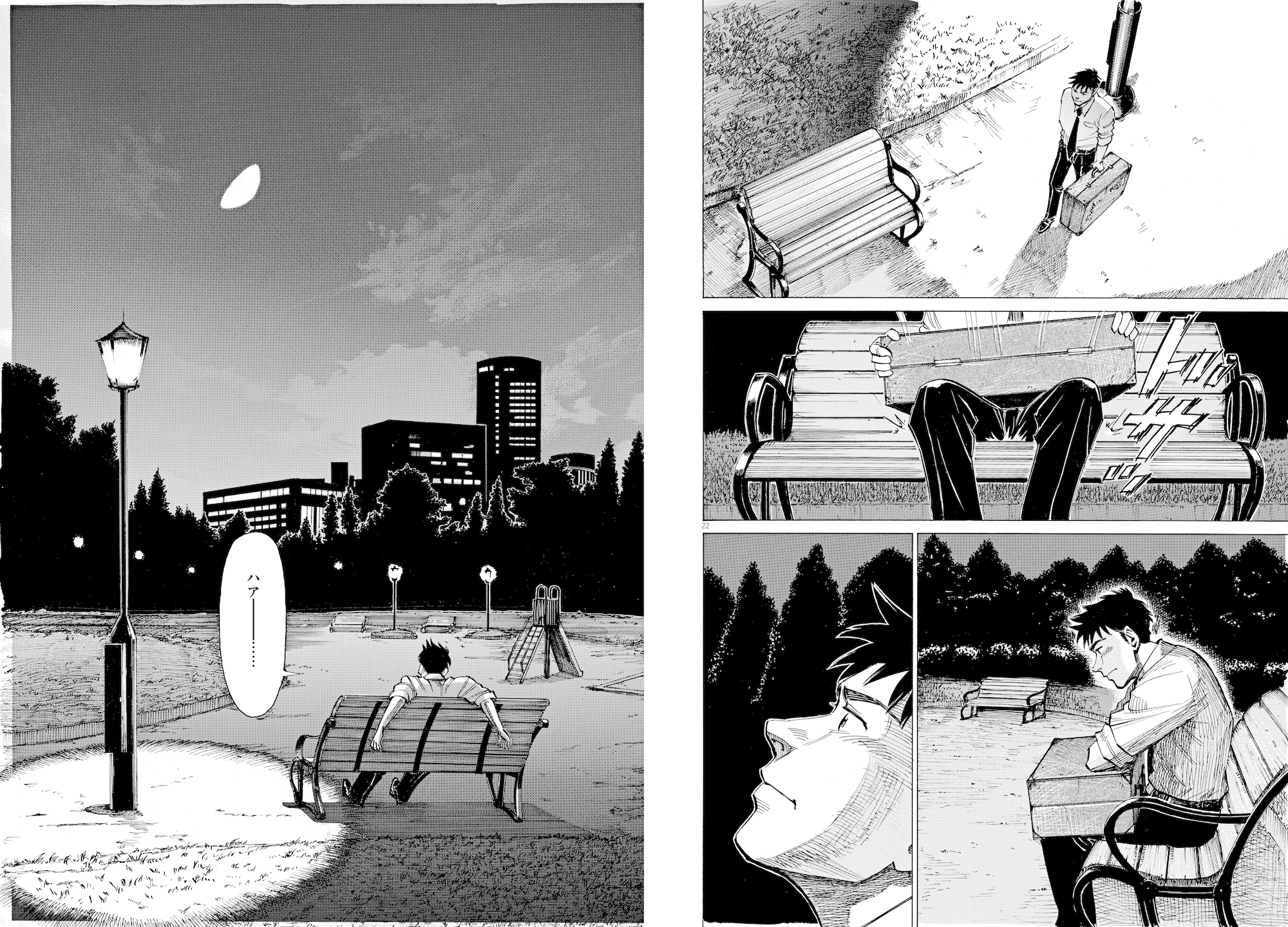
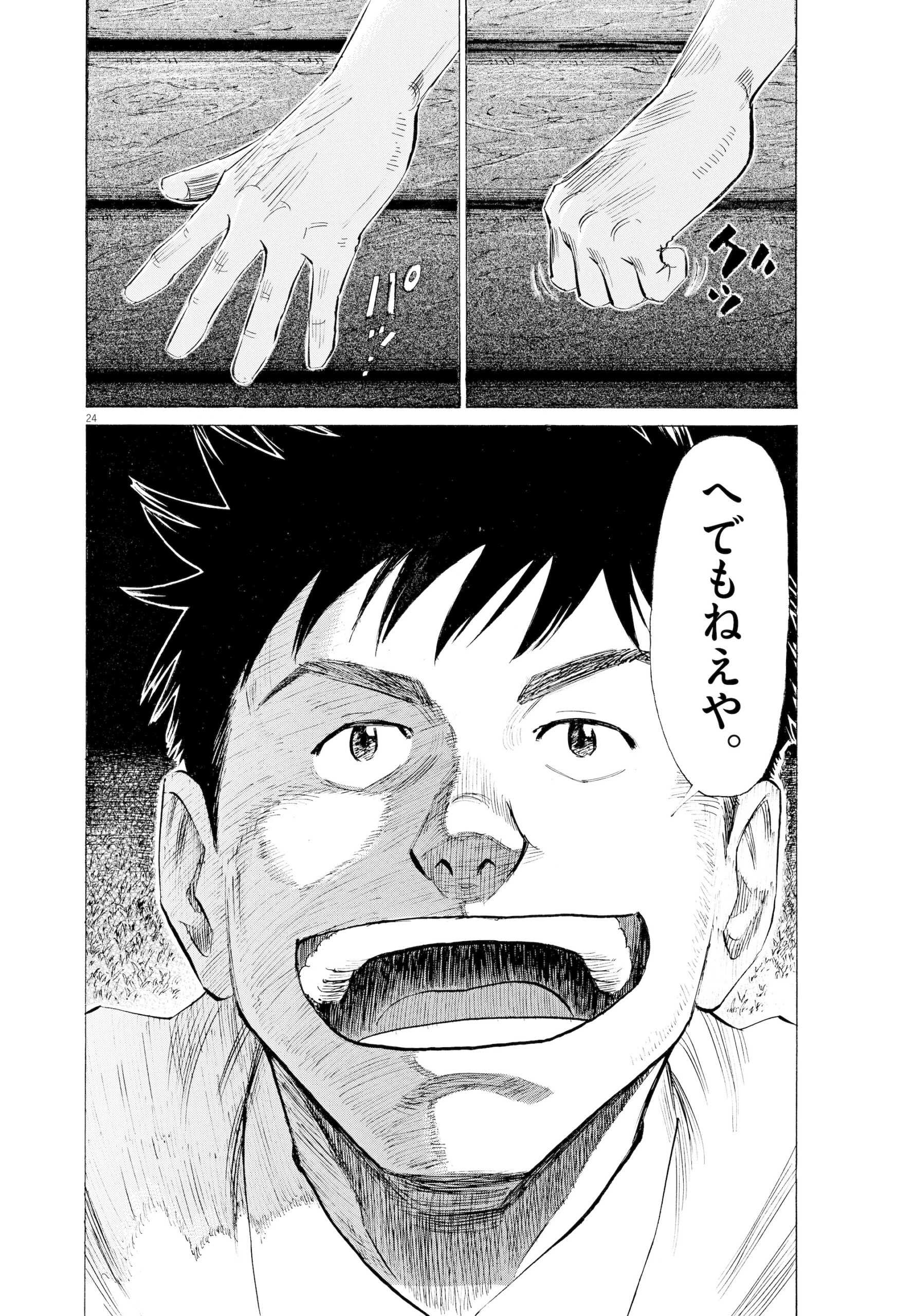
BLUE GIANT ©︎ Shinichi Ishizuka/Shogakukan
――That line is so “Dai-ish.”
Ishizuka: When I heard the idea, I was like WOW! and it sat right with me, but at the same time, I was reminded how esoteric Dai is. Even to this day, I still draw Dai thinking he’s an enigma. [laughs]
――You say, you like the words, “It’ll be fine,” and “Oh well”—so I guess, that’s a common point between you and Dai.
Ishizuka: I like when people say strict things to me. I kind of get anxious when no one is reprimanding me, because when people around you point out, “You’re wrong,” that means you’re challenging—No matter what, I want to be mentally strong. When I debuted, I had been telling myself that if my work gets rejected, I should be able to move on like, “That’s alright!” I get hyped with adversities, and the more I get slammed, the more I get revved up like, “Here’s my life challenging me!!”
“Jazz is dope!”—I want to convey this feeling especially to the young generation

――At the end of the comic book, there is a written bonus track, which I think is a genius idea—The older version of the people, who Dai has encountered in his life, are being interviewed to share their stories about him.
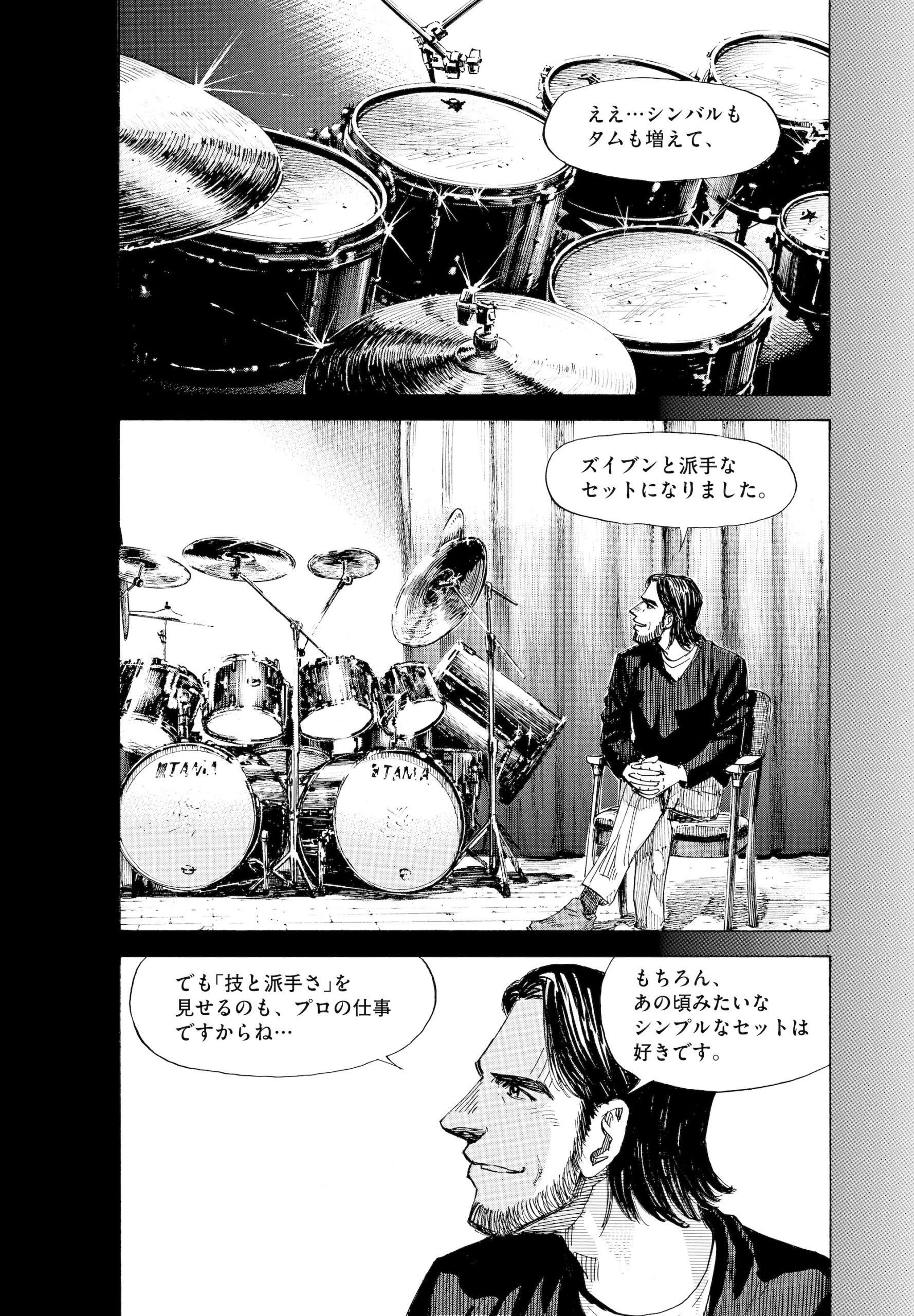
BLUE GIANT SUPREME ©︎ Shinichi Ishizuka/Shogakukan
Ishizuka: You know, in American music programs and documentary shows, they feature insider interviews. And I like watching them. With that image in my head, I wanted to experiment the rendition that shows the goal that’s to come in—yet we’ve found out that the readers are also curious about the characters’ growth, and we are relevantly happy to hear so.
――And the images of Dai that they describe are hard to imagine from him in the story so far—Do you have a vision of what kind of a man he is going to be in the end.
Ishizuka: I haven’t decided specifically yet. Though, there’s one thing for sure that he’s going to become an amazing performer. Dai says he will become the world’s number one, however, from what I’ve seen of various jazz players, I would say, “Every one of them is world’s number one”—Including those playing in small jazz bars and the greatest performers who tour around the world. So, I’m still not sure what Dai means by becoming the best in the world.
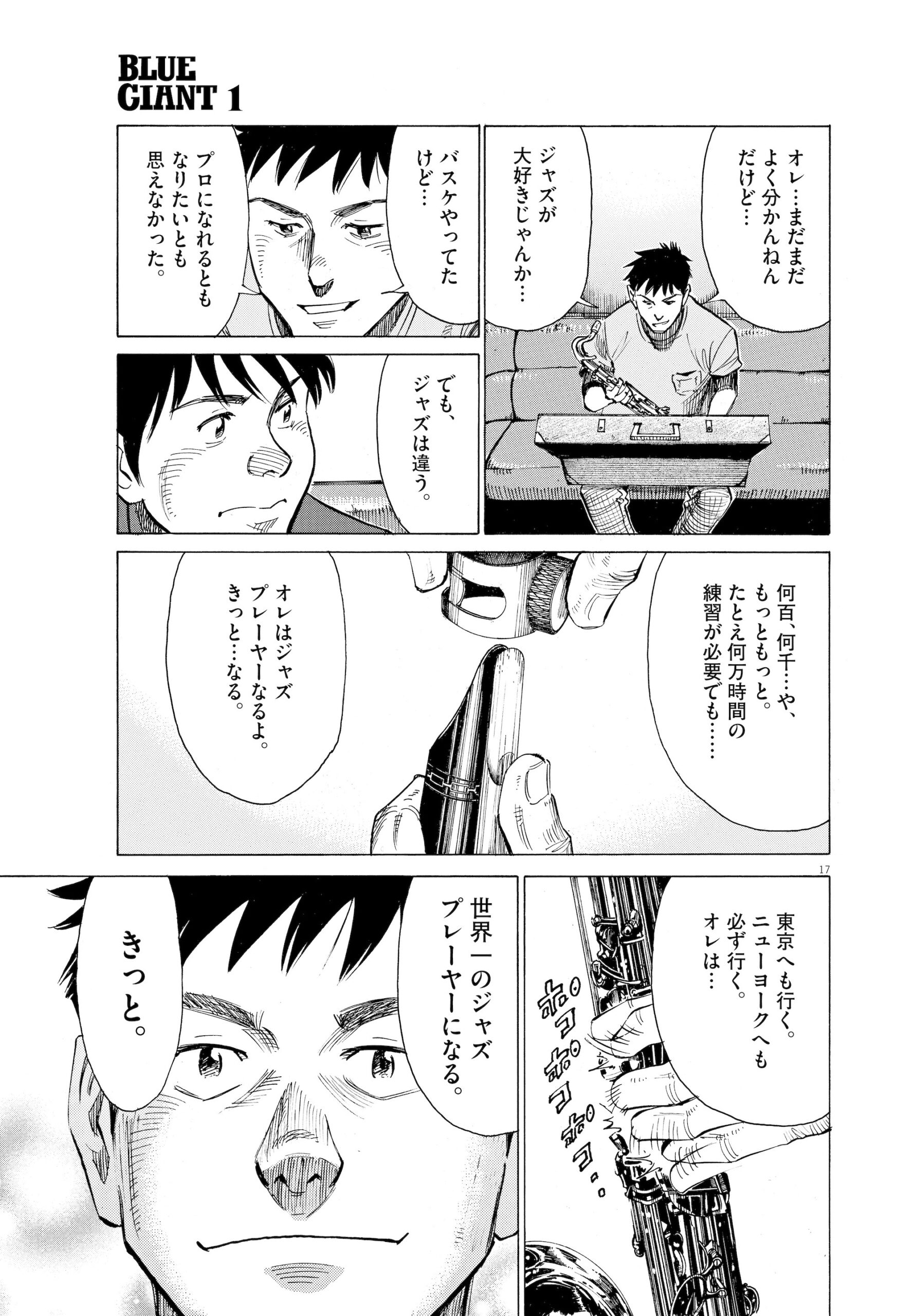
BLUE GIANT ©︎ Shinichi Ishizuka/Shogakukan
――The passionate, dramatic, and liberated music of jazz is well depicted in the story. It’s also different from the typical image of jazz, and it feels really fresh.
Ishizuka: Quiet jazz is also very pleasing, but we’ve chosen the other way to make jazz an intrinsic factor to construe the growth of the protagonist, Dai. I want young people to perceive the coolness in the intensity of jazz. As I’m one of the people being moved by jazz, I have a strong will to tell the young generation that “Jazz is dope!” In fact, it’s really important to be deemed cool by young folks. In order to convince them that jazz players are cool, first, I need to elaborate more on the characters’ outfits. [laughs]
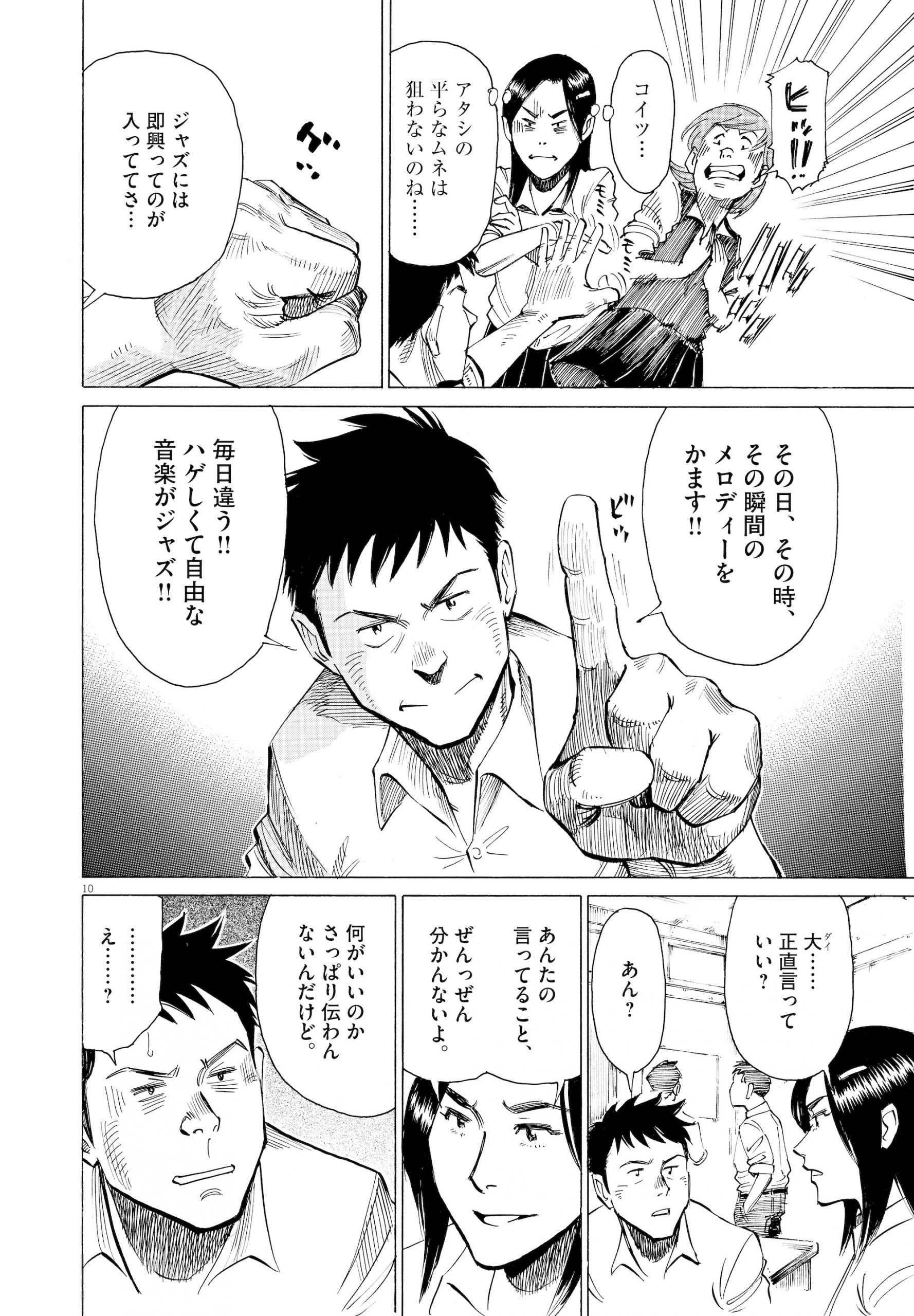
BLUE GIANT ©︎ Shinichi Ishizuka/Shogakukan
――As Dai affirms, “A white shirt is the token of a jazz man!!” I think fashion could be a gateway to jazz.
Ishizuka: I think so, too. Once jazz is deemed cool, youth would be enticed into it. Until the day that a world-renowned jazz musician, like John Coltrane, is born in Japan—I want to keep the portal wide open.
――Earlier, you were saying that there’s always a challenge—what would you say the challenges are in writing the BLUE GIANT series.
Ishizuka: Writing every single episode is a challenge. I just don’t know where the story is heading. We have a meeting every time I write an episode, and we question, “What should happen next?”—Just like that, we’re always starting from scratch and groping in the dark. Dai is just advancing, and we are perpetually figuring out how the story should develop—Nothing has changed with us since the first episode.
――On February 26th, the new series of BLUE GIANT EXPLORER is going to be released. The first series ended with Dai stating that he is leaving his first stop, Seattle. I’m ridiculously curious with what’s going to happen next.

BLUE GIANT EXPLORER ©︎ Shinichi Ishizuka/Shogakukan
Ishizuka: Dai will start heading somewhere else in the United States with the car he’s got. A young lad driving by himself on a journey—I feel like there’s got to be a meaning in the act of bringing something along with you. There are many things you wouldn’t know until you visit somewhere by yourself and see things with your own eyes. And Dai instinctively knows that there are things that can only be gained through surprises. He moves forward, always seeking to encounter new people, cities and atmospheres. That’s the way he lives, and he wants to express what he yields through his journey through the sounds.
――What I could tell from the bonus track is that the great journey continues—and I’m assuming that the series is going to go on another 10 years.
Ishizuka: Hahaha, I don’t think it’s going to last that long. [laughs] As I write the bonus tracks, I’m spreading out the cards that need to be collected in the end—I just can’t die leaving them out like that.

Shinichi Ishizuka
Born in 1971. An Ibaraki native. He studied in a university in the United States and became obsessed with climbing after joining the activity invited by his roommate. After he came back to Japan and worked at a company, he decided to become a self-taught mangaka. In 2001, with This First Step, he won the 49th Shogakukan Shinjin Comic Award for General Manga. In 2002, This First Step debuted in the extra edition of Big Comic Original. In 2003, Gaku series had started. In March 2008, the series of Gaku won the 1st Manga Award, and the 54th Shogakukan Manga Award for General Mategory in January 2009. Today, BLUE GIANT series that started in 2013, is continuously serialized in Big Comic.
https://bluegiant.jp
Photography Shinpo Kimura
Translation Ai Kaneda

